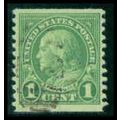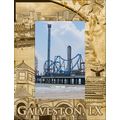Aircraft - DH9A & Bristol F2B mail planes postcard
- Condition : Used
- Dispatch : 2 Days
- Brand : None
- ID# : 37966647
- Quantity : 1 item
- Views : 589
- Location : United Kingdom

- Seller : justthebook (+1699)
- Barcode : None
- Start : Wed 09 Feb 2011 20:11:10 (EDT)
- Close : Run Until Sold
- Remain : Run Until Sold
Checks/Cheques
 for 1 item(s) edit
for 1 item(s) edit
Shipping Calculator
More Listings from This Seller view all
Seller's Description
- Postcard
- Picture / Image: 'DH9A' built by Westlands at Yeovil + 'Bristol F2B' built by BAC at Filton - both aircraft operated out of Filton and carried mail in the general strike
- Publisher: Post Office card (SWPR 31)
- Postally used: no
- Stamp: n/a
- Postmark(s): n/a
- Sent to: n/a
- Notes & Key words:
------------------------------------------------
Postage & Packing:
UK (incl. IOM, CI & BFPO): 99p
Europe: £1.60
Rest of world (inc. USA etc): £2.75
No additional charges for more than one postcard. You can buy as many postcards from me as you like and you will just pay the fee above once. (If buying postcards with other things such as books, please contact or wait for invoice before paying).
Payment Methods:
UK - PayPal, Cheque (from UK bank) or postal order
Outside UK: PayPal or Google Checkout ONLY please. NO non-UK currency checks or money orders (sorry).
NOTE: All postcards are sent in brand new stiffened envelopes which I have bought for the task. These are specially made to protect postcards and you may be able to re-use them. In addition there are other costs to sending so the above charge is not just for the stamp!
----------------------------------------------
Text from the free encyclopedia WIKIPEDIA may appear below to give a little background information:
*************
The Airco DH.9A was a British light bomber designed and first used shortly before the end of the First World War. Colloquially known as the "Ninak" (from the designation nine-A), it served on in large numbers for the Royal Air Force following the end of the war, both at home and overseas, where it was used for colonial policing in the Middle East, finally being retired in 1931.
The DH.9A was planned as an improved version of the existing Airco DH.9. The DH.9 was a disappointment owing to its underpowered and unreliable engines, and the DH.9A was planned to use much more powerful engines to resolve this. As the Rolls-Royce Eagle engine used in the successful DH.4 was unavailable in sufficient quantities, the new 400 hp (298 kW) American Liberty engine was chosen instead.
As Airco was busy developing the Airco DH.10 twin-engined bomber, detailed design was carried out by Westland Aircraft. The DH.9 was fitted with new, longer span wings, and a strengthened fuselage structure.[1]
The first prototype flew in March 1918, powered by a Rolls-Royce Eagle as no Liberty engines were yet available.[2] The prototype proved successful, with the first Liberty-engined DH.9A flying on 19 April 1918, and deliveries to the Royal Air Force starting in June.[3] By the end of the war, a total of 2,250 DH.9As had been ordered, with 885 having built by the end of the year. As it was decided that the DH.9A would be a standard type in the postwar RAF, the majority of outstanding orders were fulfilled, with 1,730 being built under the wartime contracts before production ceased in 1919.
The United States also planned to adopt the DH.9A as a replacement for the DH.4, placing orders for 4,000 modified aircraft, designated U.S.D-9A. This order was cancelled with the end of the war, however, and only a limited number of prototypes were built.[4]
While the existing aircraft were subject to a programme of refurbishment, a number of small contracts were placed for new production of DH.9As in 1925–26. These contracts resulted in a further 268 DH.9As being built. The new production and refurbished aircraft included batches of dual control trainers and six experimental aircraft powered by 465 hp Napier Lion engines, which reached a maximum speed of 144 mph.
The Soviet Union built large numbers of an unlicenced copy of the DH.9A, the R-1. After the production of 20 DH.4 copies, followed by about 200 copies of the DH.9 powered by the Mercedes D.IV engine (also designated the R-1) and a further 130 powered by the Siddeley Puma (designated R-2), a copy of the DH.9A, powered by the M-5 engine, a Soviet copy of the DH.9A's Liberty entered production in 1924
The Bristol F.2 Fighter was a British two-seat biplane fighter and reconnaissance aircraft of the First World War flown by the Royal Flying Corps. It is often simply called the Bristol Fighter or popularly the "Brisfit" or "Biff". Despite being a two-seater, the F.2B proved to be an agile aircraft that was able to hold its own against opposing single-seat fighters. Having overcome a disastrous start to its career, the F.2B's solid design ensured that it remained in military service into the 1930s, and surplus aircraft were popular in civil aviation.
The Bristol fighter's basic design stemmed from design studies by Frank Barnwell in March 1916 for an aircraft in the same class as the R.E.8 and the F.K.8 - the Type 9 R.2A with the 160 hp Beardmore engine and the R.2B, powered by the 150 hp Hispano Suiza.[2] Neither type was built as the new 190 hp (142 kW) Rolls-Royce Falcon I inline engine became available, and Barnwell designed a new aircraft around the Rolls-Royce engine. This, the Type 12 F.2A was a more compact design, intended from the outset as a two-seat fighter: it first flew on 9 September 1916.[3] The F.2A was armed in what had by then become the standard manner for a British two-seater: one synchronised fixed, forward-firing .303 in (7.7 mm) Vickers machine gun, and one flexible .303 in (7.7 mm) Lewis Gun mounted on a Scarff ring in the observer's rear cockpit.
Only 52 F.2As were produced before production switched to what became the definitive Bristol Fighter, the Bristol Type 14 F.2B which had first flown on 25 October 1916. The first 150 or so were powered by the Falcon I or Falcon II engine but the remainder were equipped with the 275 hp (205 kW) Falcon III engine and could reach a maximum speed of 123 mph (198 km/h). The F.2B was over 10 mph (16 km/h) faster than the F.2A and was three minutes faster at reaching 10,000 ft (3,000 m). A second Lewis gun was often added to the rear cockpit.
The Bristol M.R.1 is often described as an "all-metal version of the F.2b". In fact it was a totally new design - although it shared the characteristic of having the fuselage positioned between the upper and lower wing. Two prototypes were built, the first flying on 23 October 1917, but the M.R.1 never entered mass production.
aaListing Information
| Listing Type | Gallery Listing |
| Listing ID# | 37966647 |
| Start Time | Wed 09 Feb 2011 20:11:10 (EDT) |
| Close Time | Run Until Sold |
| Starting Bid | Fixed Price (no bidding) |
| Item Condition | Used |
| Bids | 0 |
| Views | 589 |
| Dispatch Time | 2 Days |
| Quantity | 1 |
| Location | United Kingdom |
| Auto Extend | No |










